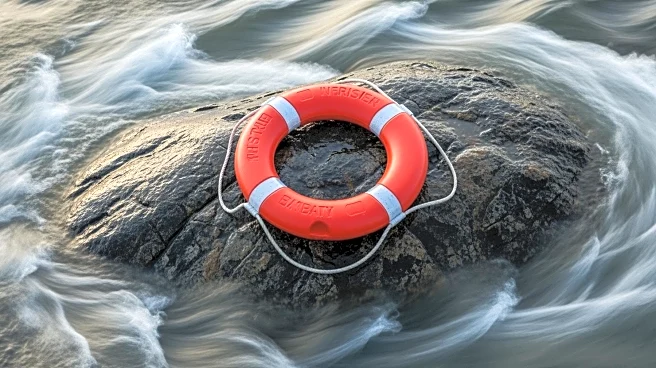What's Happening?
Tropical Storm Fengshen, also known as Wipha, is approaching the Philippines, leading to the evacuation of thousands of residents from coastal areas. The storm is expected to bring gusts of up to 80 kilometers
per hour and poses a minimal to moderate risk of coastal flooding with waves reaching up to two meters high. The eye of the storm is forecasted to pass near Catanduanes, an island with a population of 270,000, later in the day. The government weather service has issued warnings about heavy rainfall and potential flooding as the storm advances.
Why It's Important?
The approach of Tropical Storm Fengshen is significant as it threatens to exacerbate the challenges faced by the Philippines, which has recently been affected by deadly earthquakes. The potential for coastal flooding and heavy rainfall could lead to further displacement of residents and damage to infrastructure. The storm's impact on the Philippines highlights the vulnerability of island nations to extreme weather events, which can have severe social and economic consequences. The evacuations and preparations underscore the importance of disaster readiness in mitigating the effects of such natural disasters.
What's Next?
As Tropical Storm Fengshen continues its approach, authorities in the Philippines are likely to maintain and possibly expand evacuation efforts to ensure the safety of residents in vulnerable areas. The government and disaster response teams will be closely monitoring the storm's path and intensity to provide timely updates and assistance. The aftermath of the storm will require assessment of any damage and the provision of aid to affected communities. International aid and support may also be sought to assist in recovery efforts.












